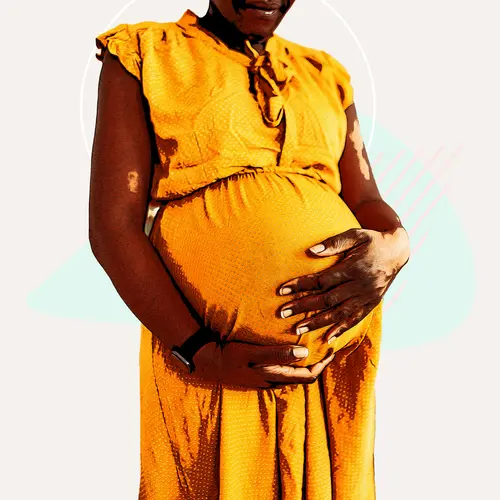Although babies can be completely safe and comfortable in their cribs without any extra items, many companies promote pillows for young babies and newborns. They're often said to help prevent "flat head" syndrome in babies and are used in cots and cribs. However, the American Academy of Pediatrics recommends waiting to let your baby use a pillow until they are two years old.
Is It Safe to Let Your Baby Sleep with a Pillow?
Pillows are not safe for babies. You should avoid using a pillow when laying your baby down for a rest, as it can increase the risk of sudden death during infancy. Experts recommend that parents wait to introduce their baby to a pillow until they're over two years old. At this age, the toddler is no longer sleeping in a crib, and they can fully move and flip over without help.
For an infant between four and 12 months old especially, additional items like a pillow on their bed can increase the risk of death. To sleep, place your baby on a firm mattress without pillows.
It can also be dangerous to let your infant fall asleep on nursing pillows. If you leave your child to fall asleep on a nursing pillow, they may roll over onto their stomachs and turn their heads on the soft fabric. Also, if your baby inclines against the pillow, their head will fall forward. Their airway can get blocked, thus risking their survival.
Older kids may be at risk of crib accidents. Your older kid may use a pillow as a step to climb up the crib. They can suddenly fall and sustain a serious injury.
What to Do if You're Worried About Flat Head Syndrome
Flat head syndrome (plagiocephaly) can be caused by a baby sleeping on their backs, and over time, their heads may flatten on one side.
However, flat heads in babies are more often caused by infant torticollis, or tight neck muscles. When a baby does not have good control of the neck muscles, it may cause them to tilt their head to one side or look in one direction when they lie down. This can cause some asymmetry in your baby’s head. Most babies who have this condition are born with it, as it can be a result of how they were positioned in the uterus.
You can help relieve this condition at home by tilting your baby’s head to the opposite side while they’re sleeping and encourage them to look in both directions during the day. More severe cases of torticollis may require treatment with a physical therapist, where they will examine your baby’s range of motion and practice exercises to get them to expand their movement.
Here are some other safer ways to treat flat head syndrome in your baby:
- Change your baby's head position while they sleep. When your baby is sleeping on their back, you can change it from left to right, then back to left. If your baby is moving around at night, place them on the head's rounded side touching the mattress. Don't use wedge pillows to maintain their body in one position.
- Hold your baby as often as possible. Minimize the time your baby spends on their back. When you pick up your baby often, this will minimize pressure on their head.
- Vary your baby's crib position. Take note of how you lay your baby down in the crib. Always position your baby in the right way to encourage turning the head to the side that has not flattened.
- Have some tummy time. Allow your baby to spend some time lying on their stomach while awake. Sing or talk to your baby, or hold up fun toys to catch their attention and encourage head movement.
Safe Pillows for Older Toddlers
Many parents consider using baby pillows to prevent flat heads in their infants. However, it is usual for some babies to develop slightly flat areas on their heads when they sleep on their backs. This usually resolves itself after a few months, as they begin to sit up and crawl on their own.
You should not use a pillow for your baby until they are over two years old. When your child is old enough, you can introduce safe pillows for sleep. Select pillows that are small and firm to provide your child with support and comfort.
The Best Pillows for Different Sleeping Positions
Various sleeping positions call for different pillows. Each sleeping position requires particular support, which can only be made possible using the best pillow. Consider your child's particular sleeping needs to find them the best support:
- Back sleepers: Use a thin pillow to maintain the head level and avoid a forward position.
- Stomach sleepers: A skinny and flat pillow — or no pillow at all — can support these sleepers.
- Side sleepers: Purchase a firm pillow that can cover the space between the sleeper's ears and the outer shoulder.
When your baby graduates from a toddler bed, you can introduce a firm pillow and light bedding. Make it fun by going out shopping with your child as you pick some new sets.


